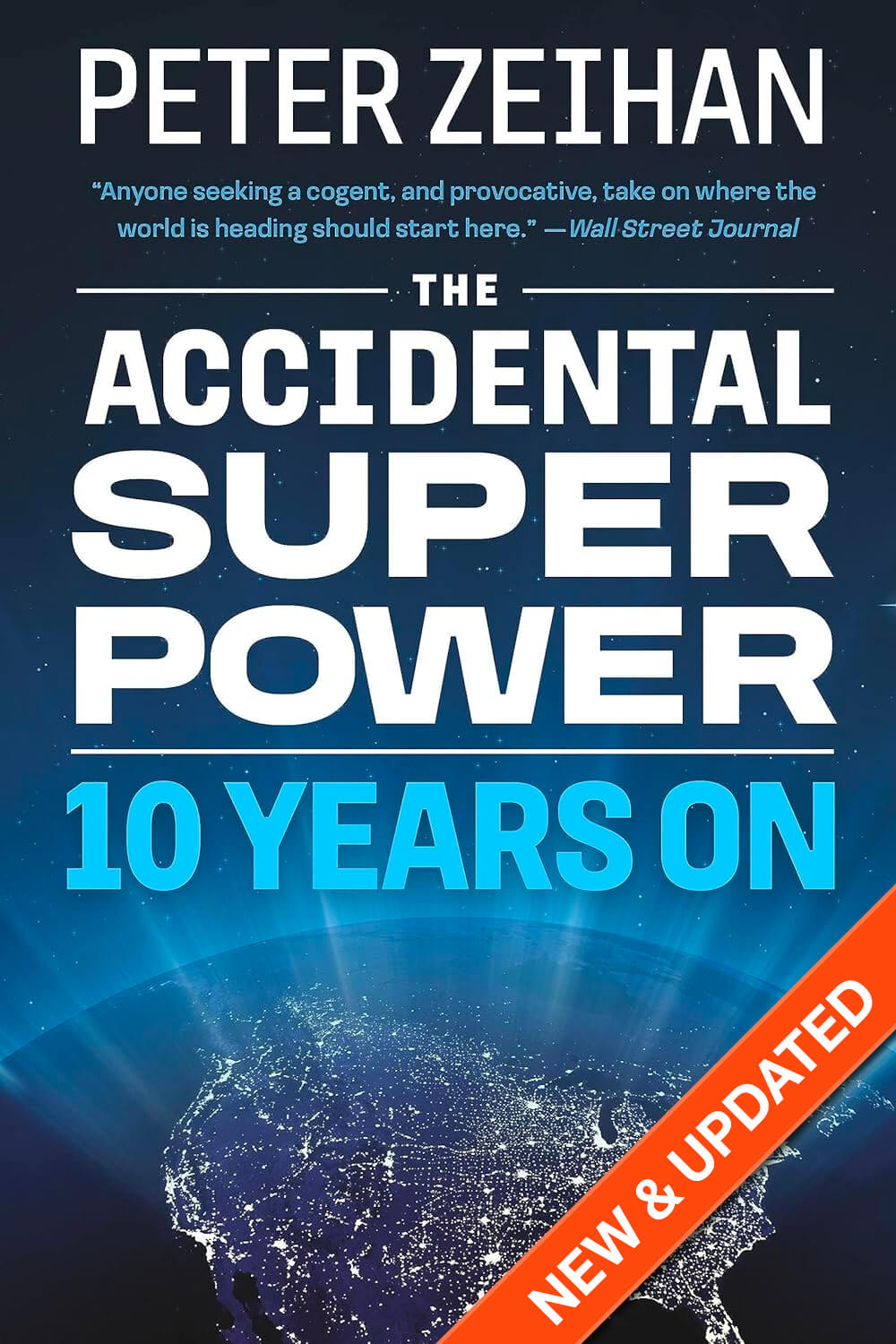
The Accidental Superpower: Ten Years On
With a new “10 years later” epilogue for every chapter, comes an eye-opening assessment of American power and deglobalization in the bestselling tradition of The World is Flat and The Next 100 Years.
I’ve got some good news and some bad news on inflation in the US…one has to do with COVID, and the other is about the labor market. Which do you want first?
Let’s start with the good news. The US is finally emerging from its COVID mask of changing consumer behavior and crazy supply chain dynamics. That means we’ve settled into more stable consumption patterns, and supply chains have finally caught up…so headline inflation is decreasing. Yay!
Now, onto the bad news. We’re entering a (two-decade-long) period of labor shortages. As baby boomers retire, the Zoomers won’t be able to keep up with labor demands. And that shortage is only going to get worse until the mid-2030s.
While it’s nice to finally see COVID in the rearview mirror, we’re coming up on something much stickier that will plague our inflation rates for a while.
Here at Zeihan On Geopolitics we select a single charity to sponsor. We have two criteria:
First, we look across the world and use our skill sets to identify where the needs are most acute. Second, we look for an institution with preexisting networks for both materials gathering and aid distribution. That way we know every cent of our donation is not simply going directly to where help is needed most, but our donations serve as a force multiplier for a system already in existence. Then we give what we can.
Today, our chosen charity is a group called Medshare, which provides emergency medical services to communities in need, with a very heavy emphasis on locations facing acute crises. Medshare operates right in the thick of it. Until future notice, every cent we earn from every book we sell in every format through every retailer is going to Medshare’s Ukraine fund.
And then there’s you.
Our newsletters and videologues are not only free, they will always be free. We also will never share your contact information with anyone. All we ask is that if you find one of our releases in any way useful, that you make a donation to Medshare. Over one third of Ukraine’s pre-war population has either been forced from their homes, kidnapped and shipped to Russia, or is trying to survive in occupied lands. This is our way to help who we can. Please, join us.
TranscripT
Hey everybody. Peter Zeihan here. I am coming to you from Millennium Park in Chicago. And today we’re in to talk about inflation. So annual inflation rate right now is below 4%, coming down from nearly 10% to a little over a year ago. And we’ve got two things that are going on. One that is small, that is getting bigger by the day and one that is big, that is getting smaller by the day.
So first, the one that is big and getting smaller, that’s COVID. If you remember back to the days of the WHO, we were dealing with lots and lots of changes. Every time we had a closing, we’d stop buying services and start buying goods. Every time we had an opening, we’d flip. And, you know, if we were closed down, the goods that we would buy would be like home improvement items and computers.
And if we opened, we’d go to restaurants and go on vacation and have revenge travel. Every time something changed and opening and closing a new variant, a new vaccine, anti-vaxxers threw a fit hypochondria, got a hold of policy. Whatever it was, we would change what we do. We change how we act. And that would change the profile of the industry space because every time we change what we say, we want.
It takes about an 18 month period for industrial supply chains to catch up to what we say we need. Well, if you think back to about two years ago, Texas, Florida and Arizona reopened for the last time over the next few months. Every other American state except for California plus Ontario joined in as well. And then we got to a point where finally the rest of kid in California joined as well.
And we got back to some degree of normal. So it has been roughly 18 months. And so what we’ve seen in the last year is basically industrial supply chains catch up. We have gotten to a situation where most of the industry is now matching what has been a more stable consumption portfolio. And you should expect that headline inflation to continue ticking down bit by bit by bit.
You want to put the political terms. Inflation going down had absolutely nothing to do with the Biden administration. But it’s converse is also true. Inflation going up had nothing to do with the Biden administration. It was us. It was just us changing our minds about what we wanted and when that is going away.
What is coming up is labor inflation. The baby boomers are the largest generation we’ve ever had. Over half of them have already retired. And as they step back from the labor force, we’re discovering that the younger generation, the Zoomers, just don’t have it in them. They’re the smallest generation we’ve ever had, and they’re now the new force in the workforce.
And if you look at the difference between the exiting boomers and the entering zoomers this calendar year, we had a shortage of about 450,000 workers. That number is going to increase every year for the next 11 before peaking in 2034, had an annual shortage of about 900,000. How do we know they’ve already been born? We know what the inflow to the labor market looks like for the next 20 years, and we’re going to have to wait until another large generation enters the workforce.
Those will be the kids of the millennials. But that can’t happen until those kids grow up and get trained. And that won’t happen until the 2014. So a lot of the inflation that we’re seeing right now is going away, but it’s going to be replaced with something that is far more sticky and something that isn’t going to go away for quite literally decades.
So, you know, buckle up.








